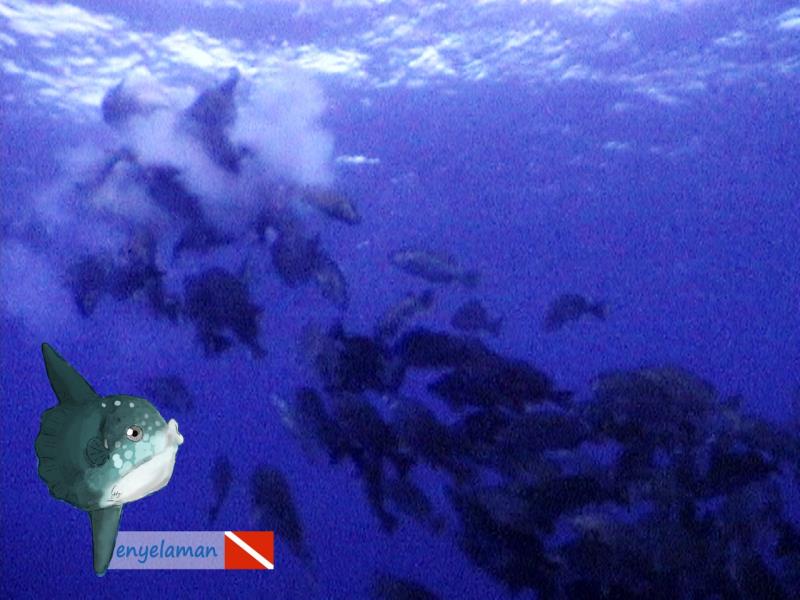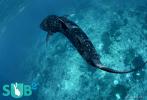 Advice on Scuba Diving in Glover's Reef and Southern Belize, Belize
Advice on Scuba Diving in Glover's Reef and Southern Belize, Belize
Part 1: Overview of Scuba Diving in Glover's Reef and Southern Belize, (Belize)
For those venturing south of Belize City, you will encounter the southern coastal cities of Belize including, Dangriga, Placencia, and Punta Gorda. These towns all offer water taxis and dive excursions to Belize's southern atoll known as Glover's Reef, and the many small cayes and barrier reef running parallel just offshore the mainland. Glover's Reef is a pristine atoll, a less travelled scuba diving destination. Unlike Ambergris Caye, Turneffe Atoll, the famous Blue Hole and the cayes just off Belize City, Glover's Atoll does not attract as many day-trippers and dive boats.
Glover's Reef is one of the three atolls in Belize. Glover's Atoll is a protected Marine Reserve and a World Heritage Site. The oval shaped atoll is just 20 miles long and 7 miles wide but boasts 54 miles of reef that ring its edge. The lagoon in the center of Glover's is deeper than the lagoons in Turneffe and Lighthouse atolls, and there are three breaks along the lagoon, allowing tidal waters to ebb and flow in and out of the lagoon daily. Glover's rim is made up of hundreds of patchy reefs, small cayes, and rocks that barely touch out of the water in most places. Glover's is a captain's nightmare in dark stormy seas but a scuba diver's dream.
Glover's Reef Research Station is the site for hundreds of marine biology and ecological studies about the atoll. The science station is on Middle Caye and has only been in existence since 1997. The station not only manages and teaches ecological awareness and conservation about Glover's Reef, but also oversees the preservation of the entire Belize Barrier Reef system. Thirty percent of the waters in and around Glover's Reef are considered “No Take Zones”, meaning that fisherman cannot harvest anything from these designated waters. Rangers from the Belize Fisheries Department stationed from Middle Caye continually patrol and enforce these relatively new laws.
The Belize Barrier Reef is spectacular for diving off the southern town of Dangriga. There are many dive sites along the seaward side of the great reef, which grow even more popular day by day.
Part 2: Dive Sites, Marine Life & Environment in Glover's Reef and Southern Belize, (Belize)
Glover's Reef is home to steep wall dives and amazing reef and marine life. The colorful Spotlight parrotfish, Queen parrotfish and Nassau grouper are just a few of the reef fish species that have made a comeback after years of over fishing. The protected atoll and the life it harbors is a great place for scuba divers. Along the barrier reef towards the mainland Glover's Reef is the most spectacular place to dive in the southern waters of Belize.
The most famous dive site on Glover's Reef is off the seaward side of Long Caye known as The Wall. Aptly named because it is a cliff whose top is just 35 feet under the water's surface, and whose face steeply plummets 3,000 feet into the dark abyss. The amazing part of this dive site is that experienced divers can swim from Long Caye's shore to The Wall. As you boat further south along the atoll, there are other wall dives such as Middle Caye Wall and Southwest Caye Wall that are less frequented than The Wall off Long Caye. These two wall dive sites are great dives, but for advanced divers only due to the fact that the cliffs edge starts at 100 feet plus. These remote wall dives are often chartered privately with individuals or dive shops. The coral growth is amazing, especially along the cliff edge, and expect to see Giant brain coral, abundant Orange sea lily, and Red boring sponges along with lots of red algae coating coral rubble.
On the west central side of Glover's Reef is the dive site called Emerald Forest Reef. The reef tip is just about 1 foot underwater and the wall slopes down in about 50 feet of water making this dive site shallow enough for intermediate level scuba divers. In addition, the current is usually mild. This dive site is also great for snorkelers and beginner divers who are just getting their fins wet. Experienced divers will enjoy diving along Emerald Forest's wall, descending into depths where there is amazing reef life to explore.
Gladden Spit is a zone of reef and water offshore from Belize's southern coastal city of Placencia. The area is famous for its frequent sightings of the huge and gentle Whale shark. Scuba divers and snorkelers swim in the deep waters of Gladden Spit in the hope that the giants will visit them. The best times to see them are in late March, April, May and June. The Whale sharks return usually in fewer numbers between August and October, and again in late December into January. The giant's are attracted to the spawning Dog snapper and Cubera snapper. The islands known as the Silk Cayes in the southern zone of Gladden Spit are a protected “No Take Zone”, and are ideal for scuba divers. Silk Cayes Canyon offers experienced scuba divers steep walls and abundant reef life.
Less than 10 miles off the coast of Dangriga sits the Belize Barrier Reef. The experienced and brave scuba diver can hire a water taxi or private dive boat captain to explore the unspoiled reef. Coral Monument Canyon is a great dive spot to explore the reef. The small Tobacco Cayes, where tobacco was harvested, has the nearby dive site called Tobacco Channel. Here there is a natural break in the reef and abundant marine life and coral take in the current and nutrient flow. Along this section of the reef there are many established dive sites and places yet to be explored. Out off the reef it is common to see Hammerhead sharks patrolling the waters. The reefs of Belize have only started to be explored.
Part 3: Dive Shops, Airports & Logistics of Diving in Glover's Reef and Southern Belize, (Belize)
Most tourists and scuba divers think of the Blue Hole, Turneffe Atoll or the northern island of Ambergris when they think of Belize. However, there are also hidden, remote treasures in the Caribbean's southern waters off Belize. Begin your trip, like most trips to Belize, by flying into Philip S.W. Goldson International Airport (BZE) in Belize City. Once you have arrived into Belize City, you can either water taxi to the southern cayes or hop on a short flight to the many airstrips on the cayes. Hop flights are significantly cheaper from the Belize City Municipal Airport (TZA) rather than the International airport. Even considering the taxi fare you would be better off flying from the municipal airport. However, most dive resorts and dive expedition do launch from Belize City. The southern town of Dangriga just 70 miles to the south of Belize City is worth the cheap hop-flight from the municipal airport in Belize City.
Dangriga is a popular town to explore Belize's inland rivers, mountains, and Mayan ruins from, and to water taxi from Dangriga frequent Glover's Reef and the many small remote cayes of southern Belize. In Dangriga, there are new dive shops springing up each year to meet the growing demand for day trips to Glover's Reef and the barrier reef dive sites just 10-15 miles offshore from Dangriga. Hopkins Underwater Adventures is a dive shop that offers excursions to Glover's Reef and the barrier reef sights just offshore. Another dive shop in Dangriga well worth setting up a scuba diving day trip with is Hamanasi. Out in the nearby waters offshore from Dangriga is Thatch Caye where divers can stay and play at Thatch Caye Resort. This resort caters to scuba divers and offers short boat ride to the best dive sites along the nearby barrier reef.
The small private island known as Long Caye is on the southeast seaward rim of Glover's Reef. Long Caye is home to the resort known as Slickrock Adventures and the nearby Off the Wall Dive Center & Resort. Both offer accommodations, dive instruction and dive excursions along the nearby wall and other dive sites along Glover's Reef. Off the Wall Dive Center & Resort picks up and drops off guests each Wednesday and Saturday in Belize City with its private speedboat. Glover's Atoll Resort is another small private resort and dive destination on Glover's Reef. Located on Northeast Caye, the resort is a paradise for relaxation, snorkeling, scuba diving, eating, drinking, and soaking in the sun.
---- Book Your Diving ----
Fill in the Form Below.
Our hand picked regional partners will deliver no obligation quotes.
Tweets by @DiveAdvisorApp
Top Dive Shops
Top Dive Sites
Reviews
Dive Logs
-
andreasmuljadi Saturday, May 12, 2001
-
andreasmuljadi Friday, May 11, 2001




